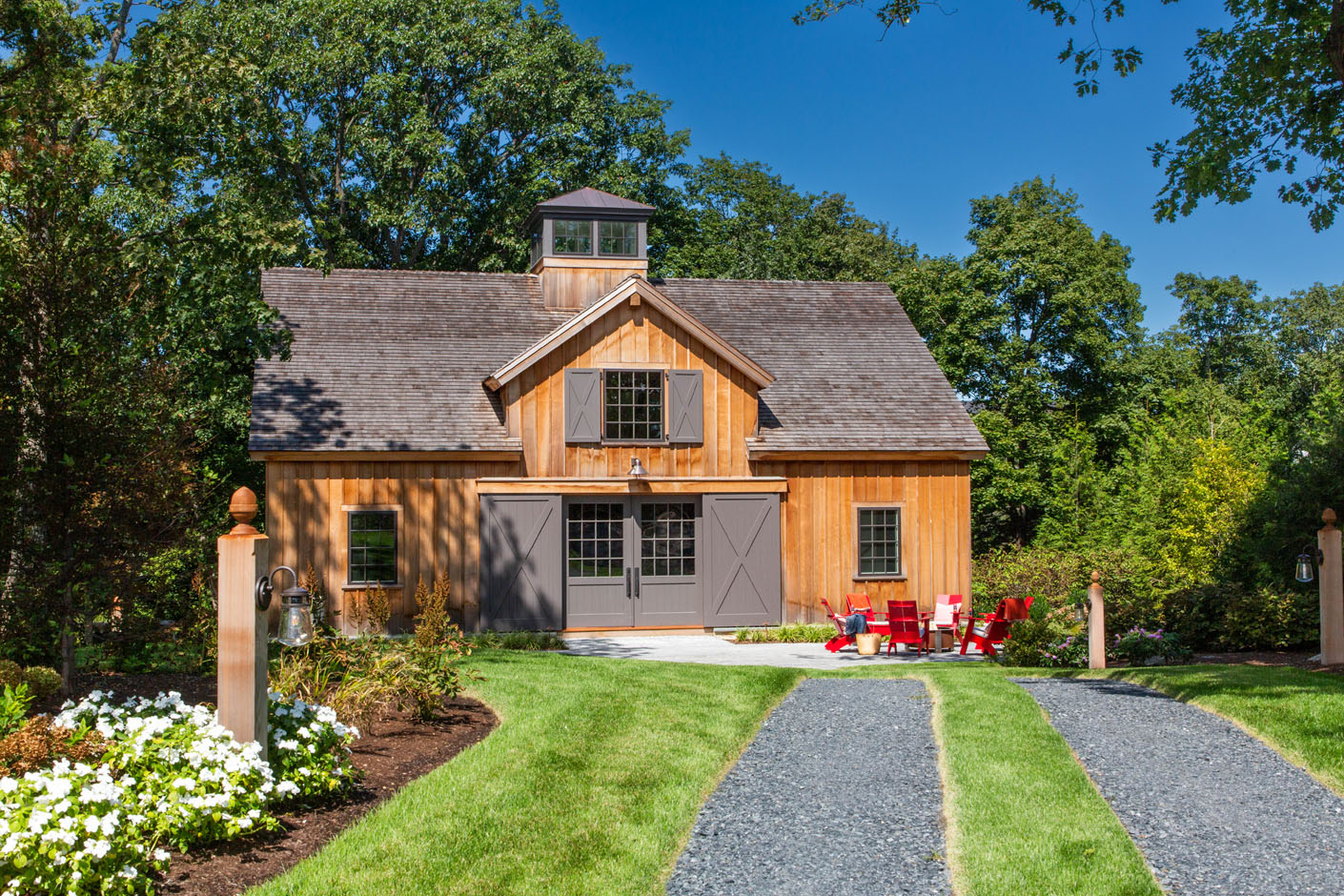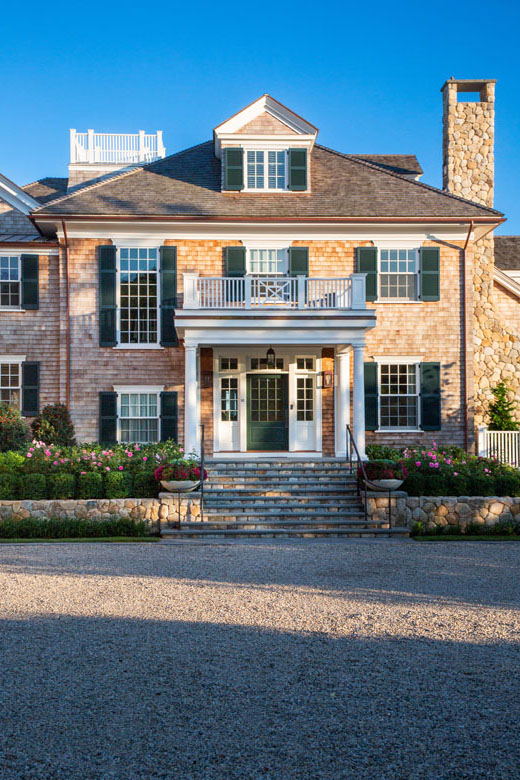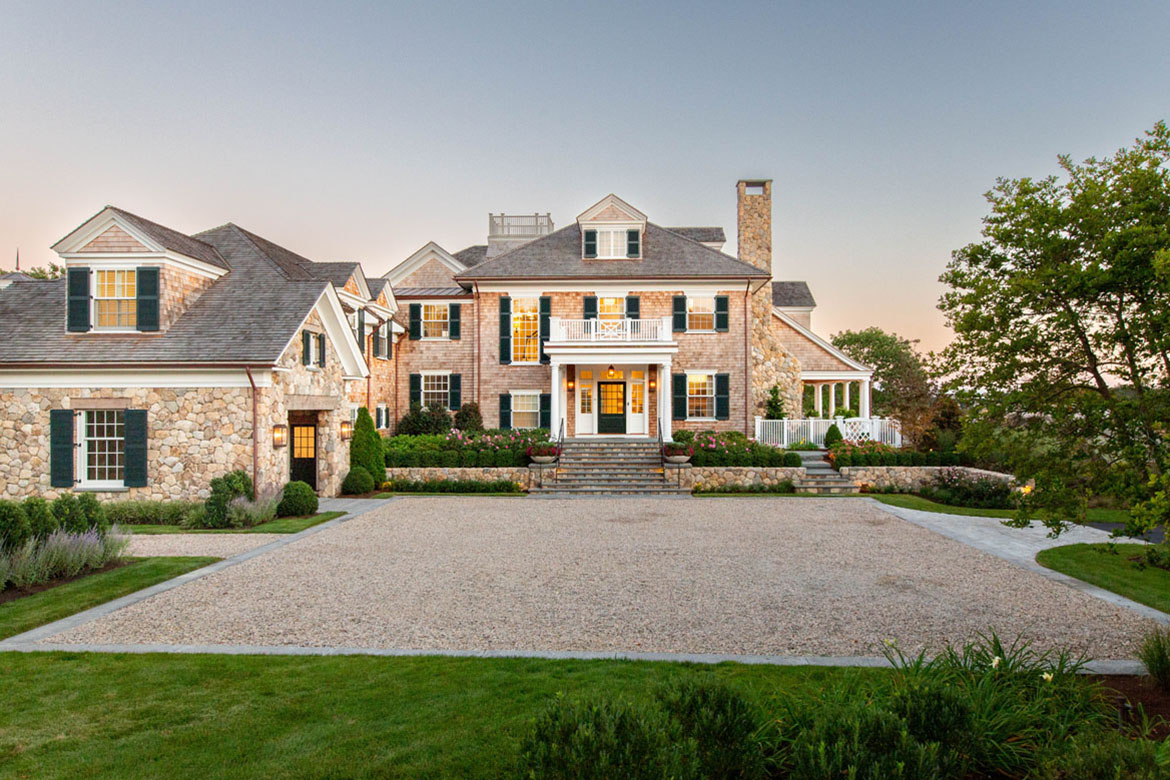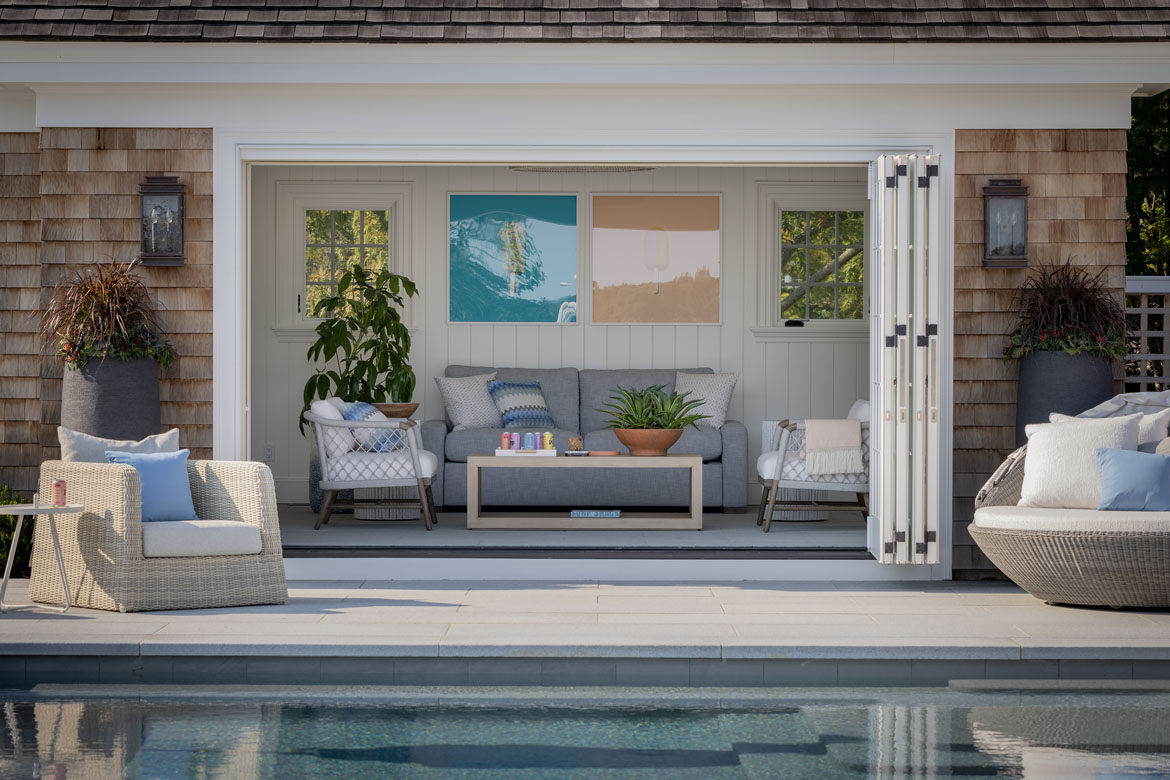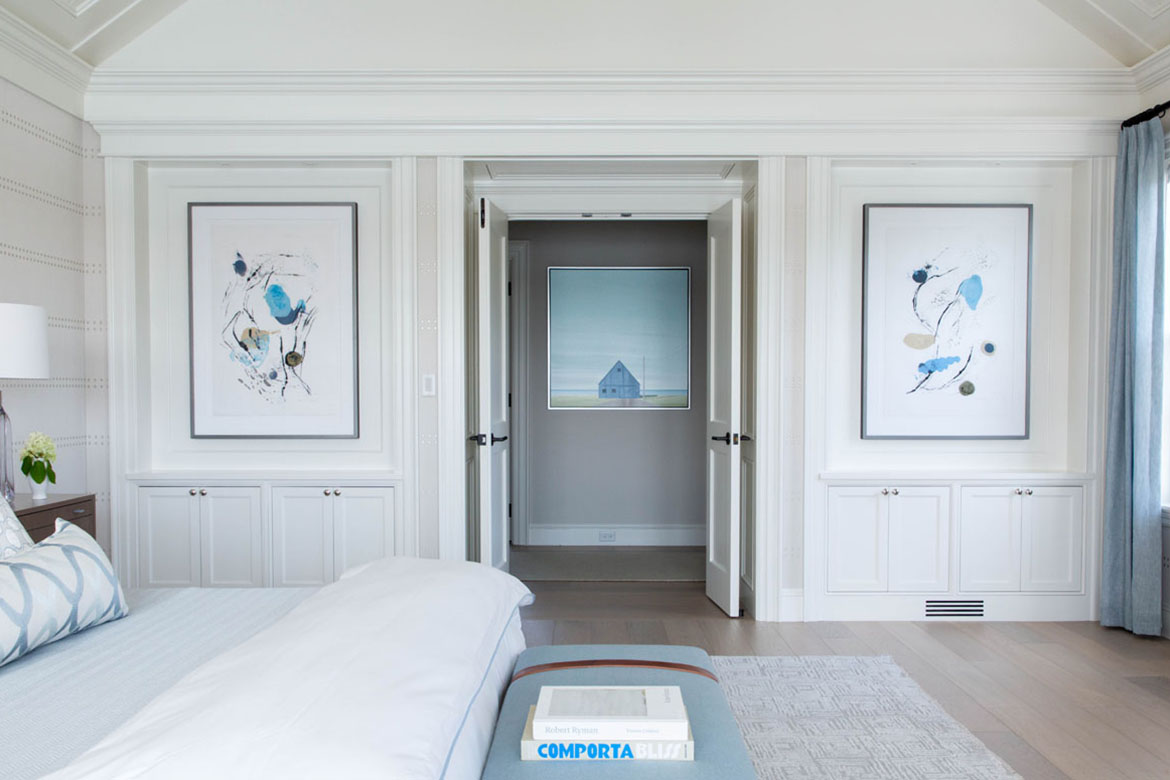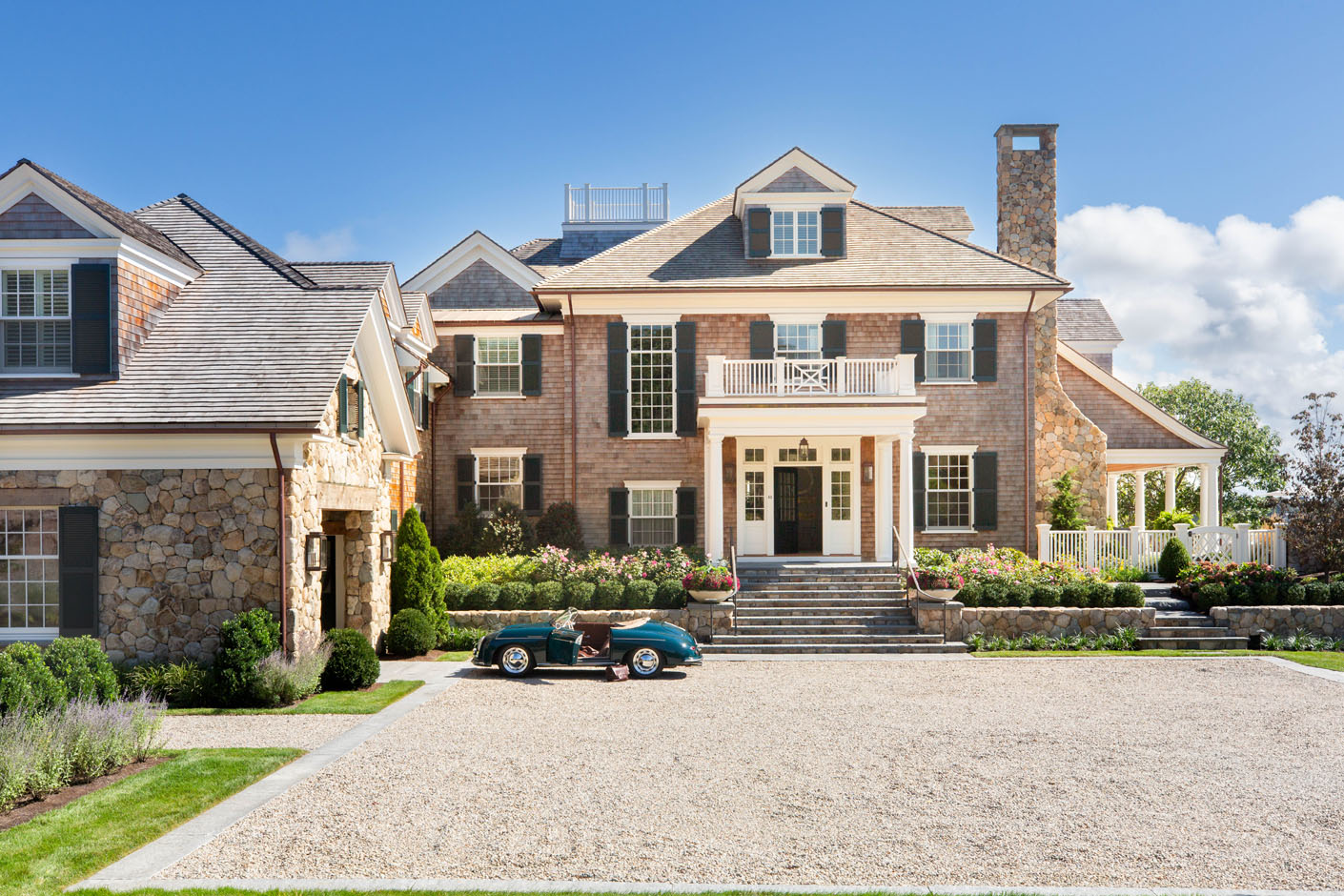

To achieve these goals, the disjointed 1990s additions were removed from the house. Reinterpreted augmentations were developed that celebrated the 1906 structure and allowed the Foursquare box to lead the property’s narrative. While the concept of a porte-cochere would remain, the piece was completely reconfigured as part of an overall arrival sequence. Now, a winding drive along the edge of land and sea resolves in a stately arrival court with a new porte-cochere masking a stepped-down carriage house wing behind it and a new pool cabana protecting the privacy of swimmers and guests on the sundeck.


In addition to the carriage house wing, another addition was developed that would allow for much softer sequencing of spaces and floors within the home. Significant topographical challenges existed on-site with ledge and steep grade transitions abounding. By bringing the grade up just slightly and redesigning the spaces within this new addition, continuity could be conveyed from the entry at the porte-cochere instead of a steep and foreboding flight of 17 stairs.


Further work was completed on the main residence for structural and aesthetic purposes. Every chimney was rebuilt, and every stone pillar was fortified and reconstructed. A modified entrance was designed to convey a more inviting sense of welcome and not overwhelm the front door. A sunken family room was raised to be at the same level as the rest of the first-floor program, and a once dark, inward-oriented kitchen was reconfigured to be a bright, open place of family gathering.


Beyond the main residence, a barn on the property was repurposed as part of a comprehensive program for entertaining. The original barn lacked a proper foundation and was razed and rebuilt for enduring integrity. Now beyond the expansive lawn, the new barn all but beckons to guests to come sit by the fire, relax, and enjoy time together.
